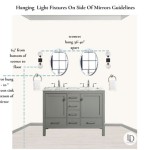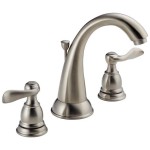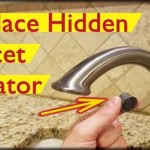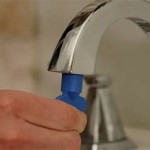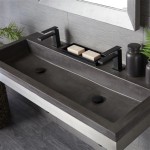How To Remove a Built-In Bathroom Cabinet
Removing a built-in bathroom cabinet is a common home improvement project undertaken for various reasons. A desire for updated aesthetics, a need for increased storage space, or required repairs behind the cabinet can all necessitate its removal. This process, while relatively straightforward, requires careful planning, the right tools, and a systematic approach to ensure a clean and damage-free removal. Before initiating the removal, it's crucial to understand the type of cabinet, its construction, and how it is secured to the wall and floor.
Preparation is paramount to a successful cabinet removal. This includes gathering the necessary tools, protecting the surrounding area, and disconnecting any utilities connected to the cabinet. It is essential to prioritize safety throughout the process. Disconnecting water lines and electrical wiring must be handled with utmost care to prevent injury or property damage. Proper planning and execution will significantly reduce the risk of complications and contribute to a seamless removal.
Key Point 1: Prioritizing Safety and Preparation
Safety should be the primary concern before initiating any part of the cabinet removal process. Water lines and electrical wiring pose significant risks and must be addressed proactively. Begin by shutting off the water supply to the bathroom. This is usually accomplished by turning off the shut-off valves located beneath the sink or, if those are unavailable, by shutting off the main water supply to the house. Once the water is off, turn on the faucet to relieve any residual pressure in the pipes.
If the cabinet has any electrical connections, such as for lighting fixtures or outlets, the power to the circuit must be turned off at the breaker box. Before touching any wiring, use a non-contact voltage tester to confirm that the power is indeed off. This simple step can prevent electric shock. If there is any doubt about electrical safety, it is advisable to consult a qualified electrician.
Protecting the surrounding area is crucial to prevent damage during the removal process. Cover the floor with drop cloths or heavy-duty cardboard to safeguard against scratches and dents. Similarly, protect the walls adjacent to the cabinet with painter's tape and plastic sheeting. This protective barrier will minimize the risk of paint chipping or wall damage caused by tools or debris. Clear the bathroom of any movable items, such as rugs, toiletries, and decorative pieces, to create a safe and unobstructed workspace.
Gathering the necessary tools before starting the removal will streamline the process. A well-equipped toolkit will include: a utility knife, a screwdriver set (both Phillips head and flathead), a pry bar, a hammer, a reciprocating saw or drywall saw, a stud finder, safety glasses, work gloves, a dust mask, a level, a pencil, and a garbage bag for debris. Having these tools readily available will prevent interruptions and ensure a more efficient removal.
Key Point 2: Step-by-Step Cabinet Removal Procedure
With safety measures in place and the surrounding area protected, the actual removal process can begin. The first step involves carefully detaching any components connected to the cabinet, such as the countertop. Countertops are typically secured with adhesive, screws, or both. Use a utility knife to score along the edges of the countertop where it meets the wall or backsplash. This will help prevent the paint from peeling when the countertop is removed. If screws are visible, remove them with the appropriate screwdriver.
Once the countertop is detached, it can be carefully lifted off the cabinet base. If the countertop is particularly heavy or cumbersome, enlist the help of another person to prevent injury or damage. With the countertop removed, the focus shifts to detaching the cabinet from the wall. Use a stud finder to locate the wall studs behind the cabinet. These studs are where the cabinet is typically anchored for support.
Locate any screws or fasteners that are securing the cabinet to the wall studs. These fasteners may be concealed behind trim pieces or inside the cabinet itself. Use a screwdriver or drill to remove these fasteners. If the cabinet is also attached to the floor, locate and remove any screws or nails securing it to the floor joists. In some cases, the cabinet may be secured with construction adhesive. Use a pry bar to gently separate the cabinet from the wall and floor. Work slowly and carefully to avoid damaging the surrounding drywall or flooring.
Once all fasteners have been removed, the cabinet can be carefully pulled away from the wall. If the cabinet is particularly large or heavy, it may be necessary to disassemble it into smaller sections for easier removal. A reciprocating saw or drywall saw can be used to carefully cut the cabinet into manageable pieces. Prior to cutting, ensure no hidden wiring or plumbing exists within the cabinet structure. Once the cabinet is removed, inspect the wall and floor for any damage that needs to be repaired.
Key Point 3: Addressing Hidden Wiring and Plumbing
Encountering hidden wiring or plumbing during cabinet removal demands immediate attention and caution. Prior to cutting or disassembling any part of the cabinet, a thorough inspection for hidden utilities is paramount. Use a flashlight to carefully examine the back of the cabinet and the surrounding wall cavity. Pay particular attention to areas where electrical outlets or plumbing fixtures are located. Look for signs of wires or pipes entering or exiting the cabinet structure.
If wiring is discovered, even if the power has been turned off at the breaker box, proceed with extreme caution. Double-check that the circuit is indeed de-energized using a non-contact voltage tester. If there is any uncertainty, contact a qualified electrician to assess the situation and disconnect the wiring safely. Never attempt to cut or remove wiring yourself unless you are a licensed electrician.
If plumbing is encountered, ensure that the water supply to the bathroom is completely shut off. Drain any remaining water from the pipes before attempting to disconnect them. Use appropriate plumbing tools, such as pipe wrenches and adjustable wrenches, to disconnect the pipes. Be prepared for some residual water to spill out, and have a bucket and rags handy to clean up any mess. When disconnecting plumbing, it is important to note the type of pipe and fitting used. This information will be helpful when reconnecting the plumbing or capping off the pipes.
Once the wiring or plumbing has been safely disconnected or capped off, the cabinet removal process can continue. Take extra care when working around these utilities to avoid damaging them. When the cabinet has been fully removed, it is advisable to have a qualified electrician or plumber inspect the wiring and plumbing to ensure that everything is safe and properly installed. These professionals can identify any potential hazards or code violations and make the necessary repairs or modifications.
After removing the cabinet, addressing any resulting damage to the wall and floor is crucial. The wall may have holes from screws or nails, or it may be uneven due to the cabinet's presence. These imperfections must be repaired to prepare the wall for painting or installation of a new cabinet. Similarly, the floor may have scratches or dents that need to be addressed. Filling holes with spackle, sanding uneven surfaces, and patching damaged flooring are common tasks associated with post-removal cleanup. A clean and smooth surface is essential for the successful installation of a replacement cabinet or other bathroom fixtures.

How To Remove A Medicine Cabinet Kay S Place

How To Remove A Medicine Cabinet Hunker

How To Remove A Medicine Cabinet Kay S Place


How To Remove An Old Bathroom Vanity Thrift Diving Blog

Diy Niche Shelf Old Bathroom Medicine Cabinet Makeover A Piece Of Rainbow

How To Build A Built In Bath Cabinet Diy Family Handyman

How To Remove A Bathroom Vanity Cabinet

How To Turn An Old Medicine Cabinet Into Open Shelving

How To Remove Your Bathroom Sink And Vanity Dumpsters Com


